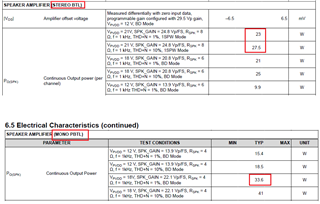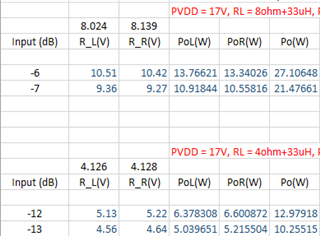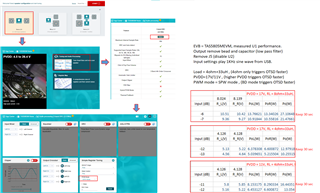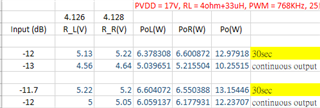Other Parts Discussed in Thread: TAS5805M, TAS5805,
Tool/software:
Hi Sir
we met some problems on TAS5805M, we would like to measure the efficiency of TAS5805M, but when we gave -15 dB on I2S input. the AMP only operated about 10sec, then it shutdowned.
We saw the error meesage 72h and 73h, it showed OTSD.
But -15dB is about 6W output.
Do we have any method to avoid the OTSD?
Here are our setting as below.
PVDD=20V, 1 TAS5805 stereo for 4 ohm.
We want to check the value of datasheet as picture below.
Could you please tell me how to config TAS5805 to meet the spec?
and did it add heatsink above of chip? what is the heatsink spec?







